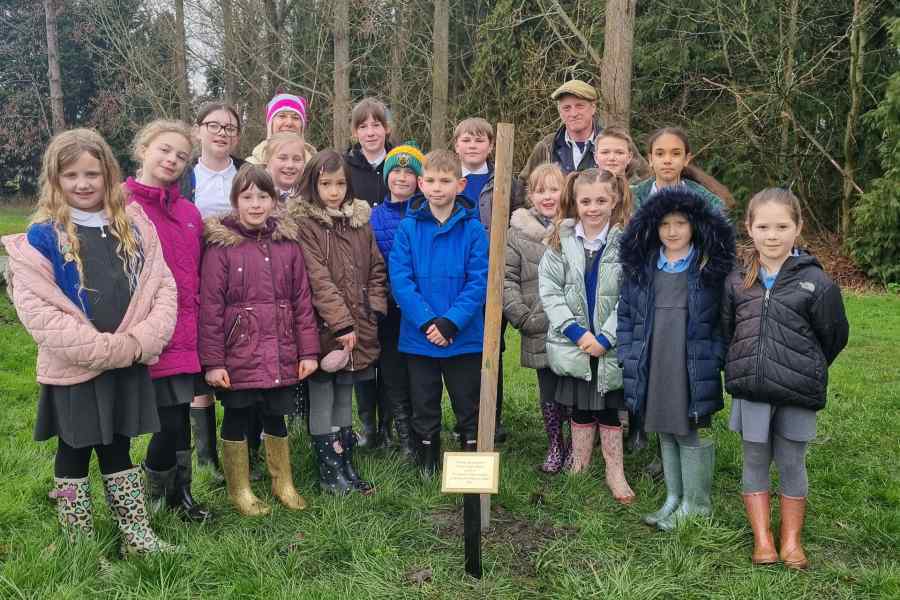School children from one of our local primary schools have helped to plant trees at Courteenhall Estate in memory of the late Queen Elizabeth II.
A group of children from Roade Primary School in Roade visited the Estate to plant a number of trees as part of a national Platinum Jubilee project.
We have planted dozens of trees across our parkland as part of the Queen’s Green Canopy. The project has seen over three million trees planted across the UK to create a living legacy in honour of Queen Elizabeth. The initiative was extended to this Spring to give people the opportunity to plant trees in memoriam to honour Her Majesty.
The different species of native trees planted at Courteenhall include oak, cedar, beech, field maple, lime, walnut and cedar.
Roade Primary School is a frequent visitor to the Estate where teachers incorporate the curriculum with learning outside.

Dr Johnny Wake, Managing Partner of Courteenhall Estate, said: “We enjoy working with our local schools and have regular visits from the teachers and children at Roade Primary School.
“They do activities such as art in the arboretum, have talks from members of the Courteenhall team to help further their understanding of where their food comes from and sustainable farming, and learn about the Countryside Code in relation to our free range livestock.
“It was great that the children helped us to plant a number of trees as part of the Queen’s Green Canopy. It’s a lovely initiative which will help to create a greener country and benefit future generations as well as being a symbol of the late Queen’s legacy.”
To see an interactive map of the UK where all the Queen’s Green Canopy trees have been planted click here.
Tree facts
- British oak trees support 2,300 species of wildlife.
- A mature tree can absorb up to 150kg of CO2 a year.
- UK Green spaces remove up to 1.3 billion kg of air pollutants each year.
- Well-placed trees can help to cool the air between 2 and 8 degrees in urban communities.





